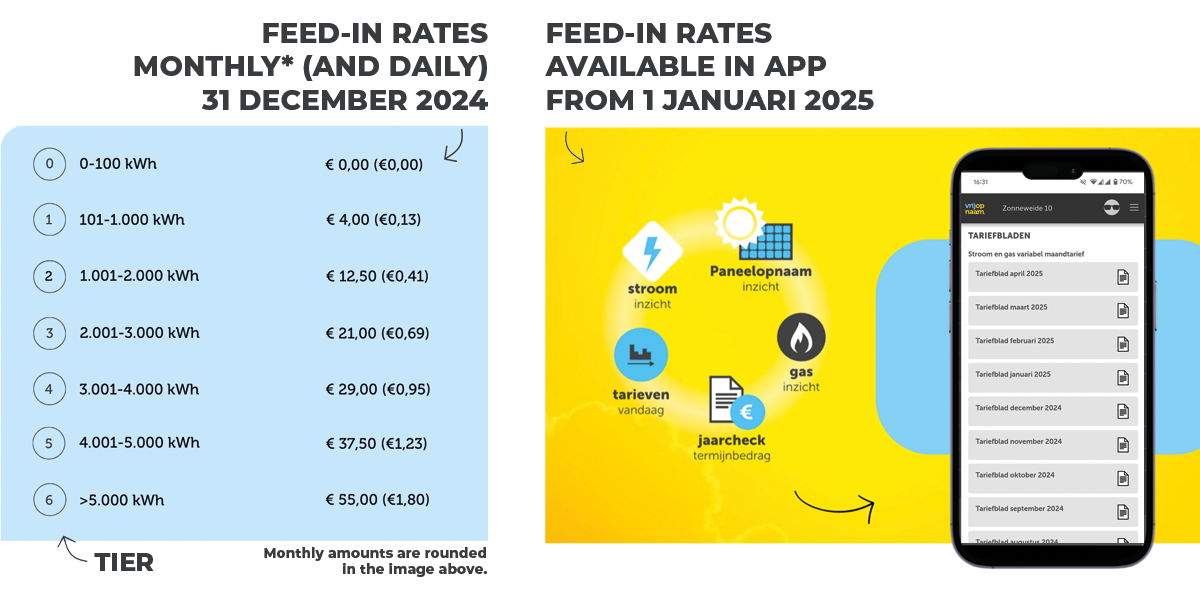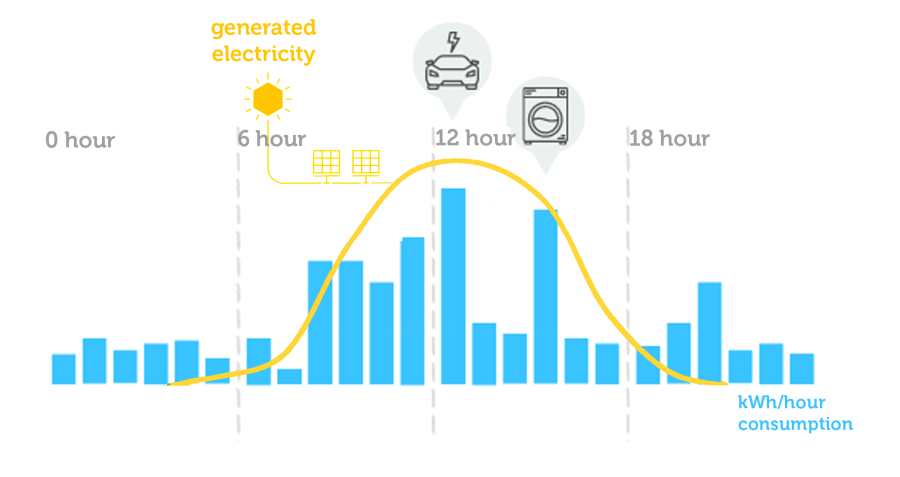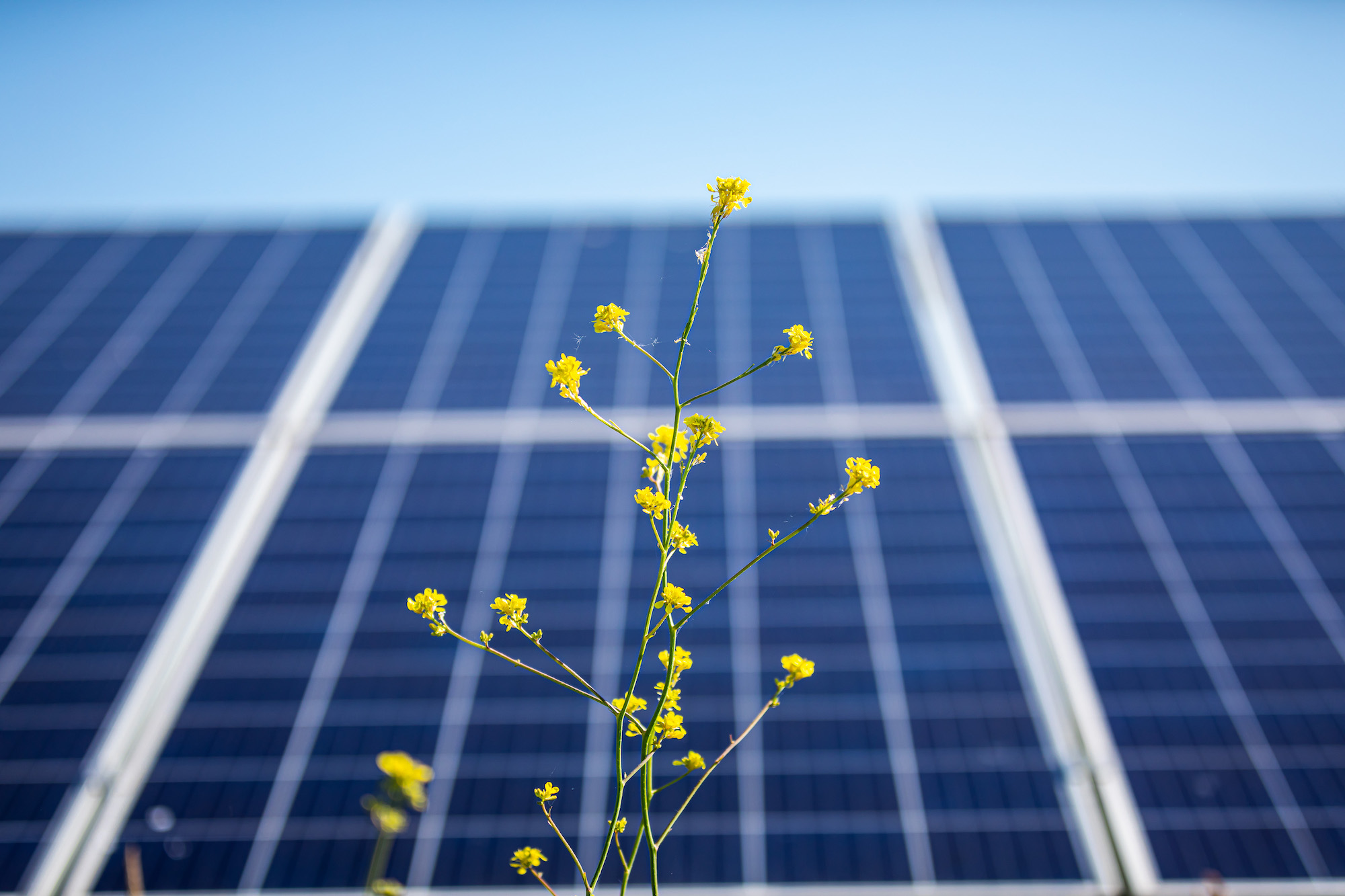In the Netherlands, more and more households are generating their own electricity with solar panels. This is a positive development for the energy transition but also brings new challenges, such as the introduction of solar panel feed-in charges.
In this article, we discuss what solar panel feed-in charges are, why they are applied, and how they differ per energy supplier. Additionally, we provide tips on how to minimize these costs and optimize the return on solar panels on your own roof.
What are solar panel feed-in charges?
Feed-in charges are costs that energy suppliers impose when you feed solar power back into the electricity grid. Feeding electricity back is only possible if you generate your own power. These charges were introduced to cover imbalance and profile costs, which arise due to the variable and difficult-to-predict production of solar energy. Previously, these costs were distributed among all customers and included in the electricity price. Nowadays, more and more suppliers choose to specifically charge solar panel owners for these costs.
Why do energy suppliers charge feed-in costs?
The increase in solar energy means that on sunny days, the supply of electricity can exceed consumption, leading to a surplus on the grid. This makes it more difficult for energy suppliers to balance supply and demand, resulting in additional costs.
To distribute these costs more fairly, suppliers charge feed-in costs to customers who return electricity to the grid. This means that only households with solar panels need to account for paying for feeding electricity back into the grid.
Our Feed-in Rates
We believe it is not fair to distribute these rapidly growing costs among all our customers, including households without solar panels. That’s why, since January 1, 2024, Vrijopnaam has been charging feed-in costs for solar panel owners. As a result, electricity prices for all Vrijopnaam customers have decreased.
2024
Solar panel owners pay a fixed daily fee throughout 2024. This amount depends on the total amount of solar power you feed back into the grid annually. Here’s how it works: In 2024, we introduced feed-in costs based on different tiers. Each tier had a fixed daily charge.
2025
Starting January 1, 2025, we will set the feed-in charges per kilowatt-hour (kWh) instead of using tiered pricing. This change ensures greater transparency and a fairer model, as everyone with solar panels will pay the same rate per kWh of electricity fed back into the grid.
The feed-in charges will be included in the monthly installment amount and can be found on the tariff sheet in the Vrijopnaam app.
Customers who do not feed electricity back into the grid will, logically, not pay any feed-in charges. These charges do not apply to a Paneelopnaam.

Saving on Feed-in Costs
Increase Self-Consumption: Try to use as much of the generated electricity as possible directly. You can do this by running energy-intensive appliances (such as the dryer, washing machine, and dishwasher) when your solar panels are producing the most power. Charging your electric bike or car during sunny periods is also a smart way to maximize self-consumption!

Feed-in Compensation
Most people with solar panels on their own roof use the electricity they generate themselves. However, in some cases, you may feed more electricity back into the grid than you consume. For this excess electricity, you receive a feed-in compensation.
You can find the feed-in compensation rate per kWh monthly on your tariff sheet in the Vrijopnaam (web) app.
Solar Panels Are Still Profitable
The benefits of having solar panels on your own roof may decrease slightly due to feed-in charges, but the investment remains highly attractive in terms of return and payback period—not to mention the environmental benefits.
Despite the introduction of feed-in charges and the planned phase-out of the net metering scheme from 2027, investing in solar panels remains profitable. The electricity you use directly as it is generated (simultaneous consumption) does not need to be drawn from the grid, allowing you to save significantly on electricity costs and energy taxes. The more of your own generated power you consume immediately, the faster you recover your investment.
Additionally, solar panels typically last 25 years or more. This means that even after the payback period, you can enjoy years of free electricity. In short, by using energy wisely, solar panel owners benefit in both the short and long term—and the environment benefits as well.
Conclusion
While the introduction of feed-in charges slightly reduces the financial advantage of solar panels, they remain a worthwhile investment. By maximizing self-consumption, households can significantly lower their electricity costs and shorten the payback period. Even with the phase-out of the net metering scheme from 2027, solar panels continue to provide long-term savings and environmental benefits. By using energy smartly, solar panel owners can still enjoy both financial and sustainable advantages for years to come.
Slimme vragen over de terugleveringskosten
Read all questionsFirst, you can save on many costs by producing your own energy. The rates for your remaining usage can be compared best after separating the commodity tariffs from all governmental taxes/levies and grid operator costs (these do not differ among energy suppliers). Your actual and historical commodity rates are visible in the Vrijopnaam app. Just select 'contractgegevens' (contract details) from the menu in the right upper corner.
Yes, we do. When you produce more solar power on your home address than you consume, Vrijopnaam pays you a compensation fee per kWh overproduction. For the Energy Tax and net metering always applies over the period of a full year.
You can find your commodity rates and the feed-in compensation fee in the Vrijopnaam app.
Fixed delivery costs apply from January 1, 2024, for Vrijopnaam customers who feed electricity back into the grid with a small consumer connection.
Customers who do not feed electricity back through a small consumer connection do not pay fixed delivery costs. Fixed delivery costs do not apply to Paneelopnaam.
Bellen naar 085-30 32 652 kan op werkdagen tussen 9.00 en 17.00 uur. Mailen kan altijd!
